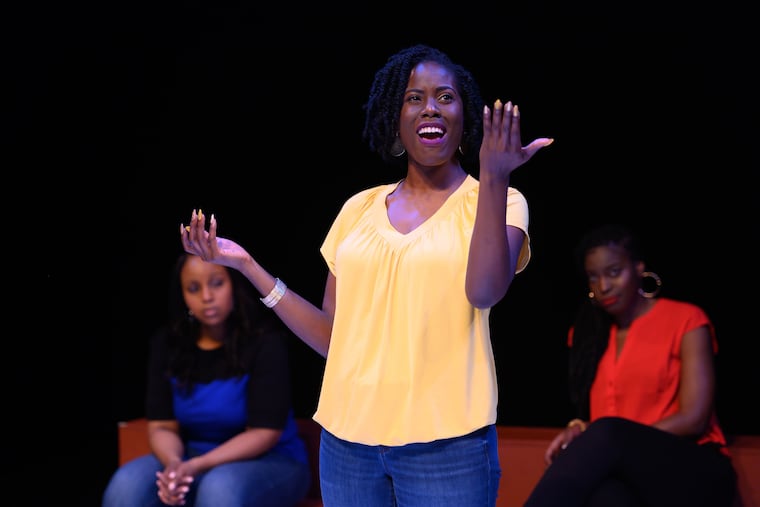‘Renaissance in the Belly of a Killer Whale’ at the Wilma is too good to miss, so hurry | Review
It’s 70 minutes of passion, joy, tasty dance battles, slam-style spoken-word — and a complex look at gentrification.

There’s a lot of great things you could do in Philadelphia between now and March 7. One very great thing, not to be missed, is Renaissance in the Belly of a Killer Whale, now through March 7 at the Wilma Theater. It’s 70 minutes of passion, joy, tasty dance battles, hand games, and slam-style spoken-word, plus a complex look at gentrification.
Jaylene Clark Owens (who plays Bridget and also directs), Hollis Heath (as Toni), and Janelle Heatley (as Shayla) co-created Renaissance with Chyann Sapp. This product of improvisation, storytelling, metaphor, memory, and girlhood dreaming has been on an “evolving world tour” since 2011. Now it gets a Center City run and deserves some Center City love.
These three are irresistible. Bridget, Toni, and Shayla, friends since childhood, sit on a brownstone stoop in Harlem, and a crisis emerges: Shayla is priced out, unable to pay the rent anymore. She is thinking of leaving.
The other two can’t believe it. In explosions of three-part harmony, complex dance moves, comic vignettes, mimicry, and lightning wordplay, our three explore what they love and what they may be losing. Many in the audience murmured, as if reliving their own childhoods.
A killer whale’s underside is “black on the sides, white in the middle,” a motif repeated in the spare but effective stage set by Angela Myers. Harlem “was tossed to us like a piece of stale bread” by whites who stayed away until, drawn to its culture, they are moving in, driving up rents, erecting huge condo towers.
In one telling, hilarious vignette, Owens and Heatley play two old Harlem buildings that warn the new tower across the street (played by Heath) that “this is our block.” Harlem “really is getting light,” meaning both “too white” and “too apathetic among the black residents.”
What to do about it? Hold that question.
Owens is the show’s cohering center. Her stint as a blabby lady on the subway is gut-busting, and her poem of praise to Harlem is a show-stopper. Oh, and she can dance just a little tiny bit.
Heath has two of the show’s best moments. She plays a grandma from the South, narrating the Great Migration of the 20th century. And she does a devastating turn as a newbie white woman who calls her superintendent “well-spoken” and thinks “the native residents seem not interested in community affairs.”
Heatley as Shayla is crucial. She asks many of the hardest questions. She objects to the violent imagery of kids’ games. She warns of the danger in seeing Harlem through the gauzy lens of nostalgia. Heath also has a fine turn as a city councilperson pressured to back a huge redevelopment plan that will gut the neighborhood.
Killer Whale joins a fine treasury of recent plays concerning gentrification, including Josh Wilder’s Salt Pepper Ketchup, Erlina Ortiz’s MinorityLand, and Tracey Scott Wilson’s Buzzer. Theater is the art that has done the most to make this issue live.
THEATER REVIEW
Renaissance in the Belly of a Killer Whale
Through March 7 at Wilma Theater, 265 S. Broad St.
Tickets: $15-$52.
Information: 215-546-7824, wilmatheater.org.